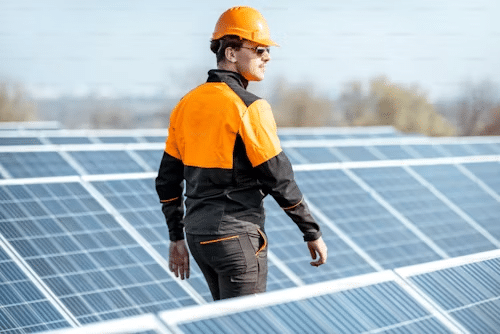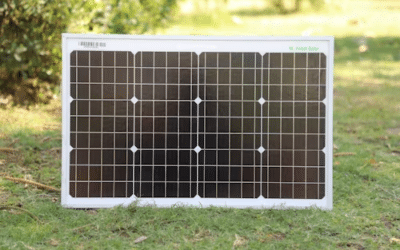If you’ve ever wondered how electricity is generated, you’re not alone. Electricity is a fundamental part of modern life, powering everything from homes and businesses to hospitals and schools. At Rise Energy, we believe that understanding how electricity is generated is essential to making informed decisions about energy use and consumption. That’s why we’ve put together this guide to help you understand the basics of electricity generation.
Electricity generation is the process of converting energy from various sources into electrical power. This power can then be used to power homes, businesses, and other electrical devices. There are many ways to generate electricity, including through the burning of fossil fuels, the use of nuclear power, and the harnessing of renewable energy sources such as wind and solar power. At Rise Energy, we believe that renewable energy sources are the best option for generating electricity because they are sustainable, environmentally friendly, and cost-effective in the long term.
As the world’s demand for electricity continues to grow, it’s more important than ever to understand how electricity is generated and how we can generate it sustainably. At Rise Energy, we are committed to helping our customers make informed decisions about energy use and consumption. Whether you’re interested in solar power, power storage systems, or energy brokerage, we have the expertise and knowledge to help you make the best choices for your energy needs.
Fundamentals of Electricity Generation
To understand how electricity is generated, it is important to first understand the role of electromagnetism. Electromagnetism is the force that causes electrically charged particles, such as electrons, to move. This movement of electrons is what generates electricity.
Electricity generation involves the conversion of energy from one form to another. This can be achieved through the use of generators, which are devices that convert kinetic or chemical energy into electrical energy.
The Role of Electromagnetism
Generators work by utilizing the principles of electromagnetism. Inside a generator, there is a coil of wire that is surrounded by a magnetic field. When the coil of wire is rotated within the magnetic field, it generates an electric current. This is because the movement of the wire through the magnetic field causes the electrons in the wire to move, which generates the electric current.
The strength of the magnetic field and the speed at which the coil is rotated both play a role in the amount of electrical energy that is generated.
Kinetic and Chemical Energy Conversion
There are two main types of energy conversion used in electricity generation: kinetic energy conversion and chemical energy conversion.
Kinetic energy conversion involves the use of a turbine to convert the energy of moving water, steam, or wind into mechanical energy. This mechanical energy is then used to rotate the coil of wire within the generator, which generates the electric current.
Chemical energy conversion involves the use of a fuel source, such as coal or natural gas, to generate heat. This heat is then used to create steam, which drives a turbine to generate electricity.
At Rise Energy, we understand the importance of generating electricity in a way that is both efficient and sustainable. That’s why we offer a range of energy solutions, including solar and power storage systems, as well as commercial and residential energy brokerage services. As Lubbock’s local guide to energy, we are committed to helping you find the best energy solutions for your needs.
Conventional Power Generation
When you think of electricity generation, you might picture massive power plants with smokestacks billowing smoke into the air. These are conventional power plants, and they generate electricity using a variety of methods. Two of the most common methods are fossil fuels and nuclear energy production.
Fossil Fuels and Thermal Power Plants
Fossil fuels, such as coal, natural gas, and oil, are burned to create heat. This heat is then used to produce steam, which drives a turbine to generate electricity. This process is called thermal power generation and is used in most conventional power plants around the world.
Coal is the most commonly used fossil fuel in thermal power plants, but natural gas is becoming increasingly popular due to its lower carbon emissions. Oil is also used in some power plants, but it is less common due to its higher cost.
At Rise Energy, we believe that renewable energy sources are the future of energy production. However, we understand that fossil fuels will continue to play a role in electricity generation for the foreseeable future. That’s why we offer independent energy brokerage services to help you find the best deals on conventional energy sources.
Nuclear Energy Production
Nuclear energy production is another method of conventional power generation. Nuclear power plants use a fission reaction to heat water, which produces steam that drives a turbine to generate electricity.
Nuclear power plants are highly regulated and require specialized expertise to operate safely. Despite this, nuclear power is a reliable and low-carbon source of electricity. At Rise Energy, we offer solar and power storage systems, which are an excellent complement to nuclear power plants. Our power storage systems can help balance the grid during peak demand periods, reducing the need for fossil fuel-fired power plants.
In conclusion, conventional power generation methods such as fossil fuels and nuclear energy production have been the backbone of electricity generation for decades. At Rise Energy, we aim to be Lubbock’s local guide to energy. From solar and power storage systems to commercial and residential energy brokerage, if you need energy, you need Rise.
Renewable Energy Sources
Renewable energy sources are becoming more and more popular as our society looks for ways to reduce our reliance on non-renewable energy sources. Renewable energy sources come from natural resources that replenish themselves over time, such as wind, water, and solar power. In this section, we will explore some of the most common and emerging renewable energy sources.
Hydroelectric Power
Hydroelectric power is generated by the flow of water through a hydroelectric turbine. The energy generated by the turbine is then converted into electricity. Hydroelectric power plants can be found all over the world, and they are a reliable source of renewable energy. At Rise Energy, we offer hydroelectric power solutions that are tailored to your needs.
Wind and Solar Energy
Wind and solar energy are two of the most common renewable energy sources. Wind turbines generate electricity by harnessing the power of the wind, while solar cells convert sunlight into electricity. Both wind and solar energy are clean, renewable sources of energy that are becoming more popular every day. At Rise Energy, we offer both wind and solar energy solutions that are designed to meet your specific needs.
Emerging Renewable Technologies
In addition to wind, solar, and hydroelectric power, there are a number of emerging renewable technologies that are being developed. These technologies include wave power, tidal power, and geothermal power. Rise Energy is committed to staying up-to-date with the latest renewable energy technologies, so we can offer our customers the best possible solutions.
At Rise Energy, we are committed to helping you find the best possible renewable energy solutions for your needs. Whether you are looking for solar power, power storage, or an independent energy brokerage, we are here to help. With our local expertise and commitment to customer satisfaction, we are the best option for all your energy needs.
Electricity Infrastructure
Generating electricity is just one part of the process of delivering power to end-users. The electricity infrastructure includes transmission and distribution systems, energy storage, and grid stability measures.
Transmission and Distribution Systems
Electricity generated at power plants is transported to homes and businesses through a network of transmission and distribution systems. Transmission systems are used to move large amounts of electricity over long distances, while distribution systems are used to deliver electricity to local communities.
Electricity utilities are responsible for maintaining and upgrading these systems to ensure reliable and efficient delivery of power.
Energy Storage and Grid Stability
Energy storage systems play an important role in ensuring grid stability and reducing electricity demand during peak hours. These systems store excess electricity generated during off-peak hours and release it during peak hours, reducing the strain on the grid.
Grid stability measures include load balancing and frequency regulation. Load balancing ensures that electricity demand is distributed evenly across the grid, while frequency regulation ensures that the frequency of the electrical current is stable.
At Rise Energy, we understand the importance of a reliable and efficient electricity infrastructure. That’s why we offer a range of services, including solar and power storage systems, as well as commercial and residential energy brokerage. Our goal is to be Lubbock’s local guide to energy, providing you with the best options to meet your energy needs.
Environmental and Economic Considerations
Generating electricity has a significant impact on the environment and the economy. In this section, we will explore some of the environmental and economic considerations of electricity generation.
Climate Change and Air Pollution
Electricity generation is a major contributor to greenhouse gas emissions, which are a primary cause of climate change. Burning fossil fuels to generate electricity releases carbon dioxide and other pollutants into the air, contributing to air pollution and climate change. Renewable energy sources such as solar, wind, and hydropower generate electricity without producing greenhouse gas emissions or air pollution.
At Rise Energy, we recognize the importance of addressing climate change and air pollution. We offer solar and power storage systems that can help reduce your carbon footprint and improve air quality.
Costs and Efficiency
The cost and efficiency of electricity generation are important factors to consider. Renewable energy sources such as solar and wind are becoming increasingly cost-competitive with traditional fossil fuel sources. In fact, the cost of renewable energy has declined significantly in recent years, making it a more affordable option for many consumers.
At Rise Energy, we believe that everyone should have access to affordable and efficient energy. That’s why we offer a range of services, including commercial and residential energy brokerage, to help you find the best energy solutions for your needs.
Policies and Sustainability
Policies and sustainability are also important considerations when it comes to electricity generation. Governments around the world are implementing policies to encourage the use of renewable energy sources and reduce greenhouse gas emissions. Feed-in tariffs, for example, provide financial incentives for the production of renewable energy, while cogeneration systems can help reduce energy waste and improve efficiency.
At Rise Energy, we are committed to promoting sustainability and supporting policies that encourage the use of renewable energy. We offer a range of services, including solar and power storage systems, to help you reduce your carbon footprint and achieve your sustainability goals.
At Rise Energy, we aim to be your local guide to energy. Whether you need solar and power storage systems, commercial and residential energy brokerage, or other energy solutions, we are here to help. Contact us today to learn more about how we can help you meet your energy needs.




